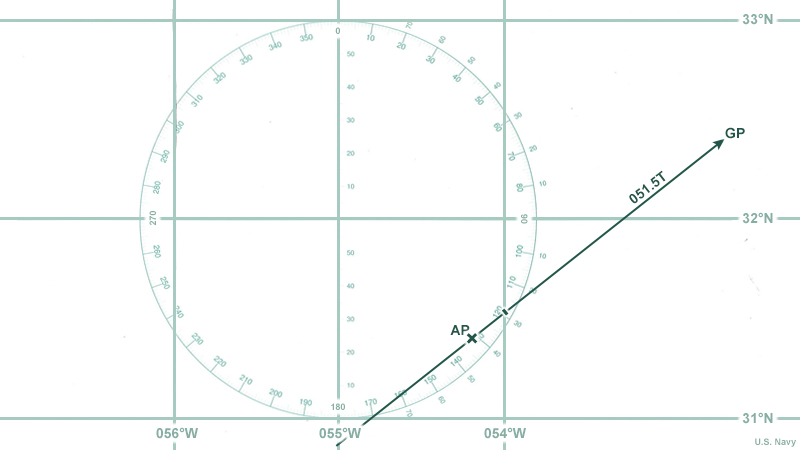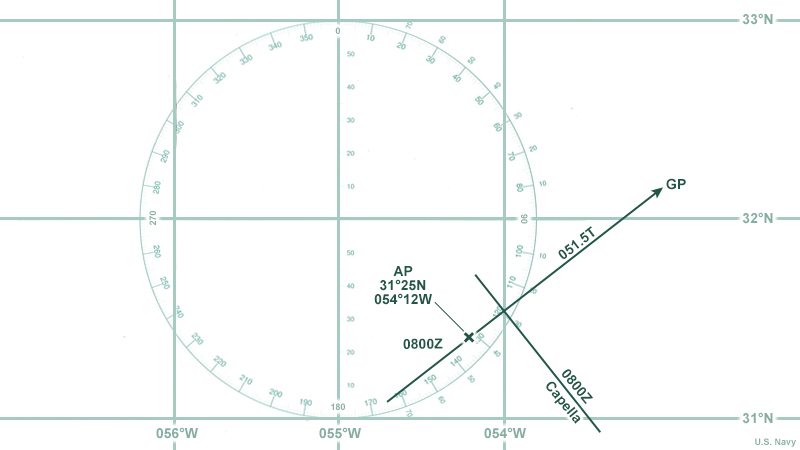A Day in the Life of a Navigator » Recap

At this point we have learned the basic ideas behind how celestial navigation works and how to use the Intercept Method to plot our lines of position on a chart.

Briefly, we know a star’s geographic position at any time by consulting an almanac or a trusted web site or app. We determine how far away we are from a star’s geographic position by measuring the star’s altitude using a sextant. When we correct the sextant observation for such things as dip and index correction, we have an observed altitude, or Height observed, Ho. We select a position close to our present location, called an Assumed Position. Any will do, but we have chosen to use our Dead Reckoning position (DR) at the time of the sextant observation. We determine the computed altitude, or Height computed, Hc, and azimuth of the star at the time of the sextant observation and the DR position. (In our example, we used the U.S. Naval Observatory’s online calculator, but this could also be done using special publications produced by the U.S. and United Kingdom Navies.)

Plotting our LOP involved drawing the azimuth line through our DR position, determining where the LOP intercepts the azimuth line, and drawing the LOP perpendicular to the azimuth line. A second and third observation gives us a fix.

The examples used throughout this module up to this point use stars to demonstrate the concepts and techniques. Stars make very good navigational objects, but they are not the only ones. The bright planets (Venus, Mars, Jupiter, and Saturn) are also used, as are the Sun and the Moon.

The Sun is especially useful because it is easy to find and can be observed during the day.
In the following segments discussing a typical day in Navy navigation, we will see how the Sun plays a very important role. Additionally, the examples shown up until now did not consider the motion of the ship. In the next segments, we will see how this is taken into account, leading to running fixes.